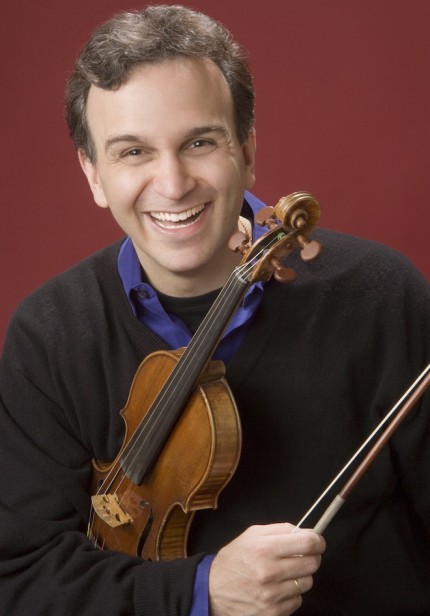Shaham and scaled-down CSO prove congenial partners

With Mahler’s sprawling Symphony No. 7 heard last week and Shostakovich’s gaunt wartime Eighth coming next week, both the Chicago Symphony Orchestra musicians and their audience could use a light-hearted respite.
That they are largely getting this week. Most of the orchestra is off and violinist Gil Shaham is appearing as soloist and conductor in concertos by Haydn and Mozart, heard at Wednesday’s Afterwork Masterworks concert.
Shaham is among the most popular of soloists and for the most part he made an admirable CSO conducting debut. His style is informal to the point of being casual, mostly conducting the two-dozen strings in movement introductions and otherwise just letting them play.
Ensemble wasn’t airtight on either end Wednesday with fleeting slips from the chamber orchestra and Shaham’s intonation wayward at times. But by and large the Champaign-born violinist and the CSO made congenial partners in this lightish program.
Haydn’s work in C-major is the best known of his violin concertos but I’m not convinced that the Violin Concerto No. 4 n G major, heard Wednesday, isn’t a better piece. The music has characteristic grace but also more of the quirkiness and dervish energy found in Haydn’s symphonies rather than his more staid concertos; the soloist’s sudden acceleration in the first movement could almost hail from his sturm und drang period.
Shaham was a persuasive advocate for this piece, with stylish solo playing and a nice rapport with the orchestra, as with the nimble dynamic detailing of both. The violinist is at his best in the kind of simple lyricism Haydn offers in the Adagio, the melody here rendered with a touching plaintive expression. The finale is a typical Haydn romp, tossed off in lively style, with an infectious main theme and much back and forth between soloist and orchestra. Probably the strange ending has something to do with this work’s neglect, with the violinist simply dropping out as the lengthy coda is played entirely by the orchestra.
Shaham’s Mozart was equally admirable, albeit with a few rough edges. Shaham clearly doesn’t mind a bit of grit in his passagework in this repertoire and for the most part it leavened his pure, radiant tone. Again, the soloist was at his finest in the slow movement, here flowing and expressive without being sentimental. The Menuetto finale had the right mix of grace and dynamism, with the cellos giving firm impact to the percussive “Turkish” writing.
The intriguing rarity of this week’s program, Karl Amadeus Hartmann’s Concerto funebre, was not on Wednesday’s abbreviated program, and so Barber’s Adagio for Strings served as the centerpiece.
The CSO strings performed Barber’s tragic meditation Orpheus-style with no conductor. That absence was felt because, refined and stellar as the CSO strings are, the Adagio is not a piece that plays itself. Without a guiding hand to shape this music, the performance proved rather bland, literal and inexpressive.
The program will be repeated 1:30 p.m. Friday and 8 p.m. Saturday with the addition of Karl Amadeus Hartmann’s Concerto funebre. cso.org; 312-294-3000
There will also be a performance 8 p.m. Thursday at North Central College in Naperville northcentralcollege.edu; 630-637-7469.
Posted in Performances


